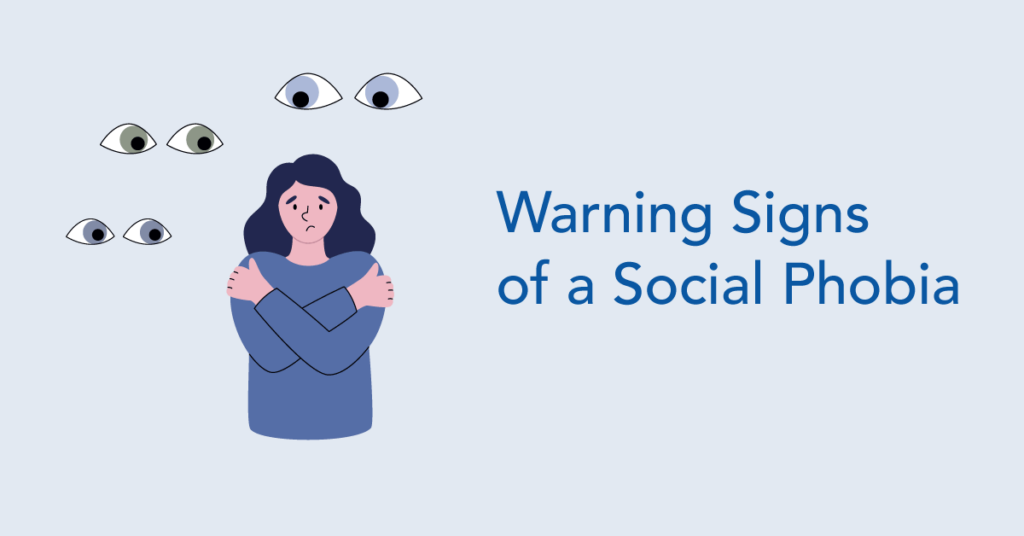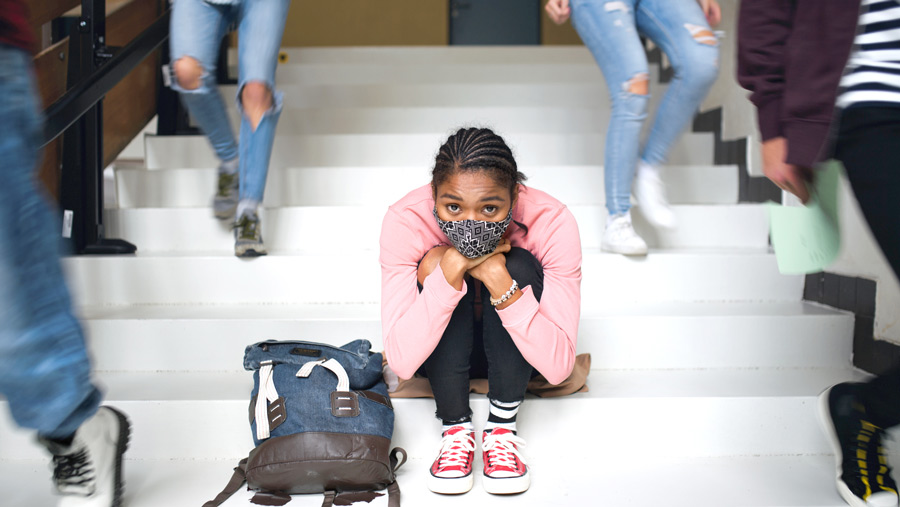If you have social anxiety disorder or a social phobia, it’s important to reach out for help as soon as possible. Social anxiety often gets worse over time without treatment. So how can you tell whether you have a social phobia or are simply experiencing normal human worries? Here’s some information that will help you tell the difference.
What Is Social Anxiety Disorder?
Social anxiety disorder, also known as social phobia, is a chronic mental health condition that involves anxiety when faced with social situations. You might feel scared that other people are going to judge you negatively in social interactions. This fear could affect your ability to go to work or school and take part in other daily activities. It can even make it hard to make and keep friends.
Social anxiety disorder is more than just shyness. It’s an overwhelming fear that can disrupt everyday life.
According to the National Institute of Mental Health (NIMH), 12.1% of adults in the United States experience social anxiety disorder at some point during their lives. It’s more common in females than in males, but anyone can suffer from it.
Signs and Symptoms of Social Anxiety Disorder
Learning to recognize social anxiety disorder symptoms is the first step to understanding and addressing this condition. Here are the key signs and symptoms:
- Intense fear of social situations. People with social anxiety disorder often experience extreme fear in situations where they might be judged, such as speaking in public, meeting new people or eating in front of others. This fear can be so severe that it interferes with daily activities.
- Avoidance behaviors. To avoid the distressing feelings associated with social situations, you might start to avoid the situations themselves. This can mean skipping events, not speaking up in meetings or avoiding eye contact and social interactions.
- Physical symptoms. The fear experienced can lead to physical symptoms like sweating, trembling, blushing, a rapid heartbeat or feeling faint. These physical reactions are a result of the body’s fight-or-flight response kicking in during stressful situations.
- Negative self-perception. A person with social anxiety often has a heightened self-awareness and a tendency to think poorly of themselves. You might believe you are inferior, unattractive or unlikable, which reinforces your fear of social interactions.
- Anticipatory anxiety. You might experience significant anxiety days or even weeks before an anticipated social event. The dread of the upcoming event can be so intense that it dominates your thoughts and emotions.
Social Anxiety Disorder vs. Common Emotions
It’s important to differentiate between social anxiety disorder and common emotions like stress or shyness.
- Shyness. While shyness can make social interactions uncomfortable, it doesn’t typically prevent you from participating in social activities.
- Stress. Stress is a response to specific circumstances and usually resolves once the situation changes. Social anxiety disorder is a persistent and ongoing condition.
- Sadness. Sadness is a transient emotion that everyone experiences from time to time, whereas social anxiety disorder involves a persistent and pervasive feeling of inadequacy.
Other Conditions That Are Similar
Several other mental health conditions have overlapping symptoms with social anxiety disorder. They include:
- Generalized anxiety disorder (GAD). This condition involves chronic anxiety, but it’s not limited to social situations.
- Panic disorder. This disorder involves having sudden panic attacks that can occur in social situations but also in other contexts.
- Avoidant personality disorder. APD can lead to severe social inhibition and sensitivity to being judged. It can be similar to social anxiety disorder but often affects more areas of your life.
- Autistic spectrum disorder. Autistic people often find social situations stressful due to sensory overload or difficulty communicating with their neurotypical peers. Resolving this kind of anxiety is likely to require the autistic person to take steps to manage sensory inputs and seek extra support in communicating.
Next Steps to Take
If you recognize these social anxiety disorder symptoms in yourself or someone else, it’s crucial to take the following steps.
- Seek professional help. A mental health professional can diagnose you with social anxiety disorder. They can recommend treatment options such as cognitive behavioral therapy (CBT), medication or a combination of both.
- Educate yourself. Learning about social anxiety disorder can help you get to know the condition and reduce your feelings of isolation. Many resources are available, including books, websites and support groups.
- Practice self-care. Exercising regularly, getting enough sleep and engaging in mindful practices such as yoga or meditation can help you manage anxiety symptoms. Reducing caffeine and alcohol intake can also be beneficial, as these substances can make anxiety more intense.
- Gradual exposure. With the guidance of a therapist, gradually exposing yourself to social situations can help reduce your anxiety response over time. It’s important to work with a professional to attempt exposure therapy, as pushing yourself too hard or too fast can make anxiety worse.
- Draw on support networks. You’ll likely find it helpful to confide in friends and family about your social anxiety disorder symptoms. They can help you face your fear of new situations, allowing you to make progress in gradually exposing yourself to them.
Getting Help for a Social Phobia
Social anxiety disorder is a serious but treatable condition. Recognizing the signs and seeking appropriate help is the best way to recover. If you or someone you know might be struggling with social anxiety, reaching out for support is the first step towards recovery. Mental Health Hotline is here to support you with social anxiety and help you recover from your social phobia. We partner with mental health providers nationwide to help you get appropriate treatment. Call us at any time to find out what support is available.


